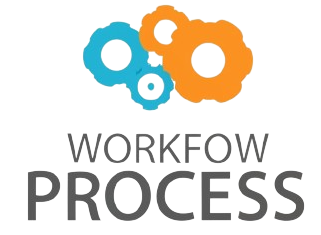Exploring Google Gemini 3: The future of advanced AI and human-like text generation
Artificial intelligence has taken significant leaps in recent years, transforming how we interact with technology. Among the latest breakthroughs, Google Gemini 3 stands out as a revolutionary advancement in AI-driven text generation. This powerful platform builds on previous models, aiming to produce text that not only feels natural but also understands and adapts to context much like a human would. In this article, we will explore how Google Gemini 3 works, the technology behind it, its practical applications, and what its emergence means for future AI developments. By diving into real-world examples, we’ll clarify why this new AI heralds a shift towards smarter, more intuitive communication tools.
How Google Gemini 3 redefines text generation
Google Gemini 3 uses a sophisticated neural network architecture that combines deep learning with extensive contextual awareness to generate text that is coherent, fluid, and meaningful. Unlike earlier AI models that might produce generic or repetitive responses, Gemini 3 innovates by simulating human-like understanding of intent and nuance.
For example, consider a customer service chatbot powered by Gemini 3. Instead of repeating scripted replies, it can analyze a customer’s specific complaint, recognize emotional cues, and respond empathetically with tailored solutions. This greatly improves user satisfaction by making interactions feel less robotic and more personalized.
The technology behind Gemini 3’s advanced capabilities
Gemini 3’s backbone is its fusion of transformer-based architectures with multi-modal processing—meaning it can integrate and generate text based on not just written input, but images and other data types as well. This makes the AI more adaptable to diverse communication needs.
To illustrate, imagine a travel app that lets users upload a photo of their destination and then asks questions about their preferences. Gemini 3 can interpret the image, analyze user input, and generate tailored travel advice combining visual and textual data. This capability exemplifies how the technology goes beyond simple language models.
Practical applications transforming industries
The power of Gemini 3 is already being harnessed across multiple sectors:
- Healthcare: Physicians can use Gemini 3 to draft detailed patient summaries or generate explanations of complex medical terms in layman’s language, improving doctor-patient communication.
- Education: Tutors and educational platforms employ Gemini 3 to create customized lesson plans or provide personalized feedback, catering to different learning paces and styles.
- Content creation: Writers and marketers benefit from AI-assisted drafting, which speeds up producing engaging articles, social media posts, or ad copy without losing creativity.
A practical case is a news agency using Gemini 3 to generate initial reports from live event data, enabling faster coverage while journalists focus on in-depth analysis.
Challenges and ethical considerations
Despite its promise, Gemini 3 introduces challenges around accuracy, bias, and misuse risks. Because it learns from vast datasets, inadvertent reinforcement of stereotypes or propagation of misinformation remains concerns. Developers and users must remain vigilant and apply safeguards to minimize these issues.
For instance, a financial advisory firm using Gemini 3 to interact with clients must ensure the AI’s recommendations are rigorously monitored to avoid misleading advice. Transparency about AI involvement and continuous evaluation are essential to maintaining trust.
| Challenge | Impact | Mitigation Strategy |
|---|---|---|
| Bias in training data | Skewed or unfair responses potentially harming users | Implement diverse datasets and continuous bias audits |
| Inaccurate outputs | Misleading information especially in critical fields | Human oversight and validating AI-generated content |
| Privacy concerns | Exposure of sensitive or personal information | Strict data protection policies and anonymization methods |
Looking ahead: The future impact of Google Gemini 3
As AI continues evolving, platforms like Gemini 3 set new standards for how machines understand and generate human language. We can expect smoother interactions with virtual assistants, smarter automation in diverse workflows, and increased collaboration between humans and machines. The key will be harnessing these capabilities responsibly to maximize benefits while guarding against risks.
Consider a future workspace where Gemini 3-powered assistants handle routine communication and research summaries, allowing professionals to focus on creativity and problem-solving—efficiency and innovation combining naturally. This vision captures the true potential of next-generation AI: not replacing human intelligence but amplifying it.
Conclusion
Google Gemini 3 represents a major breakthrough in AI-driven text generation by enhancing contextual understanding and producing highly human-like communication. Its integration of multi-modal learning and versatility across industries showcases the vast potential of advanced AI technology. While challenges related to bias, accuracy, and ethics persist, careful oversight and design can mitigate these risks. Real-world applications—from healthcare to content creation—demonstrate how Gemini 3 is already changing how we connect with technology. Looking forward, this innovation paves the way for more intuitive, efficient, and collaborative AI-human interfaces, promising a future where AI enhances rather than replaces human creativity and decision-making. Embracing Google Gemini 3’s capabilities responsibly will be crucial to unlocking its full benefits in the coming years.
